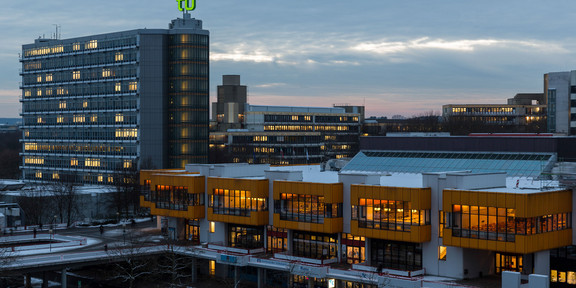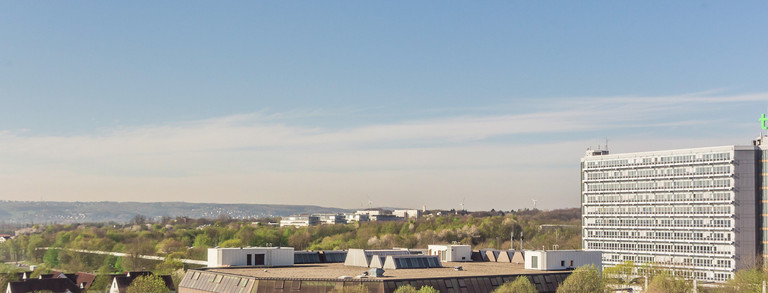Safety on campus!

The campus is a place where students, employees and visitors should feel safe and comfortable. But the campus is also a large area with very different areas. Sometimes even a faulty lamp can contribute to a path being perceived as dangerous or unsafe. Every two years, the Central Equal Opportunities Officer calls on members of TU Dortmund University to report such so-called "danger spots" to her. In recent years, a joint inspection has taken place with employees from the Department of Construction and Facility Management and the Department of Occupational, Environmental and Health Protection on the South and North Campus to inspect and evaluate the reported areas and discuss solutions. This year, due to the pandemic-related measures, a multi-stage digital process will be used to inspect the reported locations.
Hazardous areas in everyday life on campus during the pandemic
Life on campus has been in pandemic mode for over a year. Many employees are working from home and the majority of students are in their third digital semester of online teaching. The pandemic and the measures associated with it have also had an impact on the reporting and inspection of hazardous areas. The central Equal Opportunities Officer's call has been adapted to this situation. It explicitly asked about places of discomfort caused by the specific circumstances of everyday life on campus during the pandemic.
Although there are fewer people on campus, a total of 20 danger spots were reported, some of them multiple times. Many of the emails received were about inadequate lighting on paths and parking lots, especially if they are located in remote areas of the campus. However, confusing traffic situations where there is potential danger for cyclists and pedestrians due to insufficient visibility at exits and entrances were also mentioned. Other reports described problems due to rain and wet conditions.
Hazard point inspections in pandemic times
This year, the hazard inspection at Campus North and Campus South was replaced by a digital form. First, the reported locations were collected, structured and located. All danger spots were then discussed individually in the Equal Opportunities Office, compared with previous reports and finally provided with recommendations for action. These were passed on to the Department of Construction and Facility Management and the Department of Occupational Safety, Environmental Protection and Health Protection as an annotated digital route via the North Campus and the South Campus. This is where further processing of the individual areas takes place. The Department of Building and Facility Management forwards the respective hazardous points to the relevant specialist departments. For example, the Technical Facility Management - Electrical Engineering department is responsible for reports that indicate inadequate or defective lighting. (Incidentally, existing but defective lights can be reported to the control room around the clock by calling -3333 ). Following the recommendations of the Equal Opportunities Office, many of the locations are inspected by the staff of the specialist departments and solutions are implemented.
Individual hazards such as a defective exterior lamp on floor G3 and a missing disinfectant dispenser in the seminar building on Friedrich-Wöhler-Weg have already been eliminated.
Hazardous areas outside the campus
Some of the reported hazards are not located on campus and are therefore not within the university's area of responsibility. Nevertheless, the responsible authorities and organizations are identified and informed about the reports. The area under the Mensa bridge on the North Campus is a location that has been reported repeatedly for many years due to traffic problems caused by pedestrians. The City of Dortmund is planning major reconstruction work here, but this will be further delayed this year. The Department of Construction and Facility Management is in talks with the city and other authorities such as the City of Dortmund's Public Order Office to find temporary solutions and enforce compliance with the speed limit.





